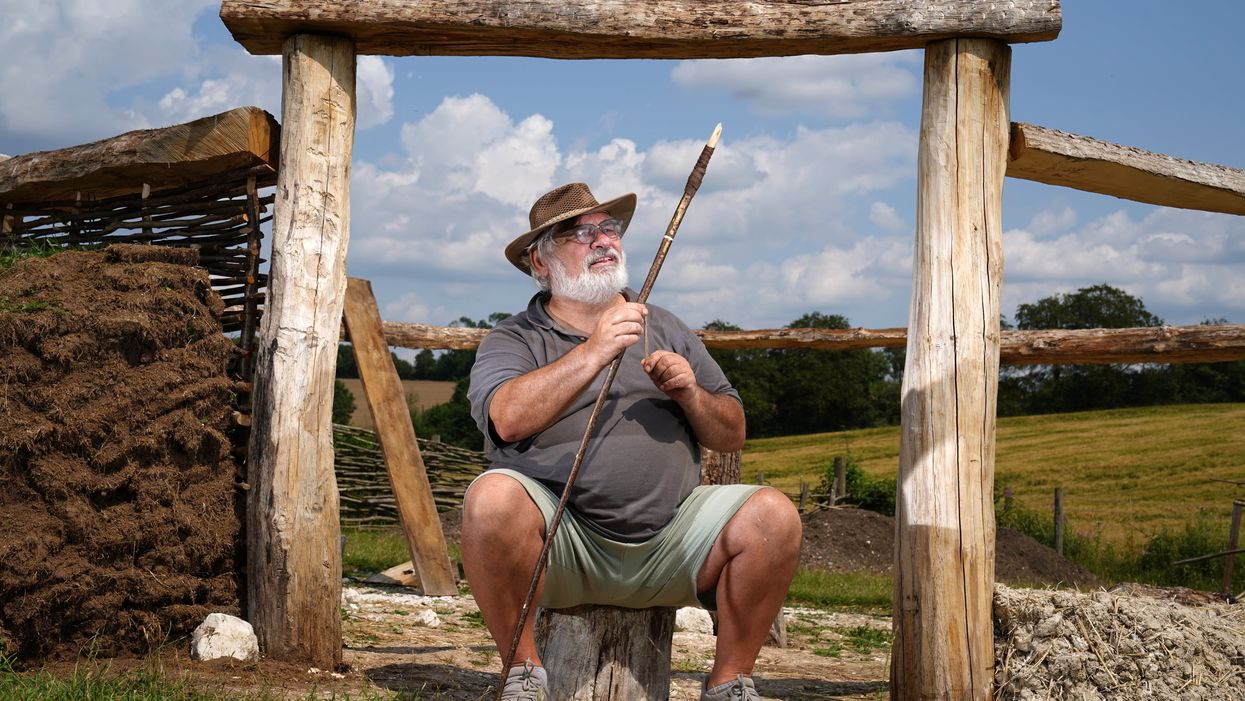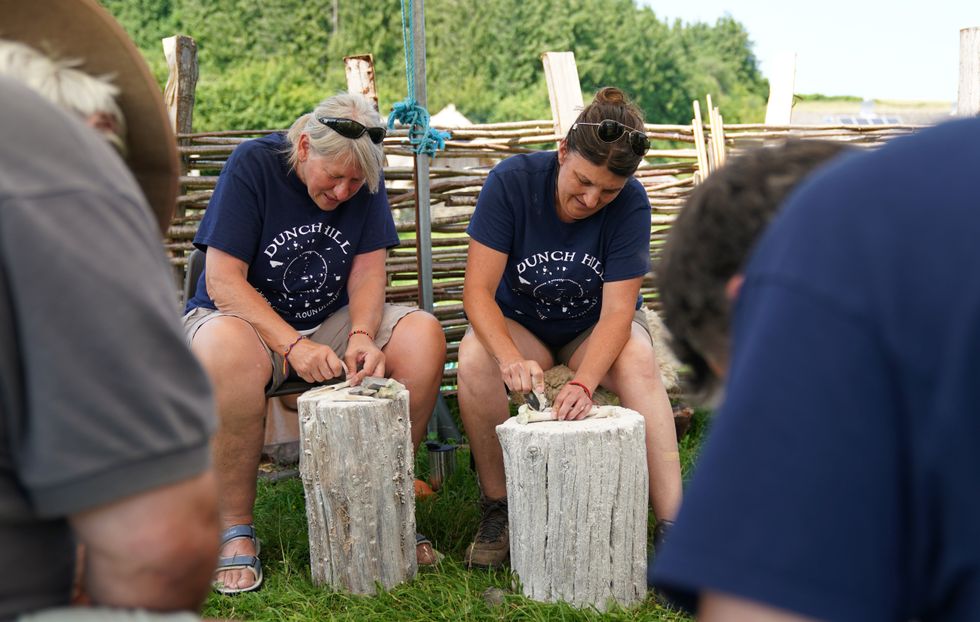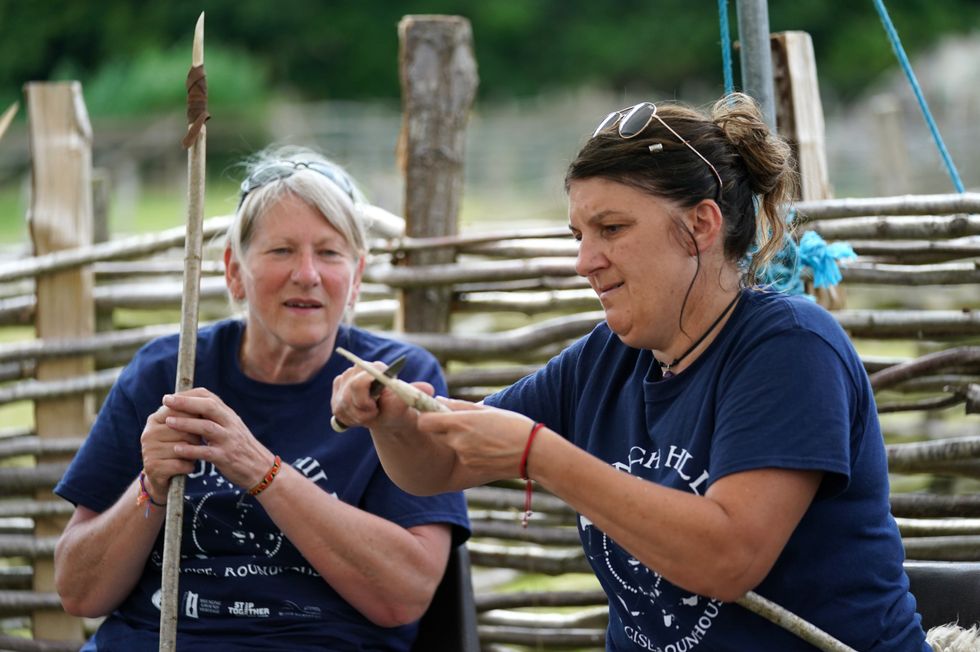
Veteran Kevin Reilly helps with work on a Bronze Age roundhouse (Andrew Matthews/PA)
Military veterans have been helping with the experimental reconstruction of a Bronze Age roundhouse in a bid to learn more about the building techniques of our ancestors.
The volunteers recruited through Operation Nightingale are working on the project at Butser Ancient Farm near Chalton, Hampshire to recreate the building which was excavated last year at Dunch Hill near Tidworth, Wiltshire.
The MoD launched Operation Nightingale 10 years ago with the aim of assisting the recovery of wounded and sick military personnel and veterans by involving them in archaeological investigations.
As well as experimenting with different building techniques with the aim of establishing the most likely method used for the original construction 3,000 years ago, the veterans have also been learning about aspects of Bronze Age life from making pottery to spears.
Archaeologist Claire Walton told the PA news agency: “This project aims to discover more about what houses in the Bronze Age may have looked like, using recent archaeological evidence to produce a full scale experimental construction.
“From the posts in the ground, to the thatch on the roof, archaeological accuracy is key to a successful outcome and indeed many months of academic discussion and research preceded the build.
“This project aims to explore the construction of the walls holding up the roof – no small task when several tons of thatch will eventually be overhead.
In our latest video the veterans help Claire start build the first turf wall ever in roundhouse construction! The… https://t.co/IjICD0nIrd— Butser Ancient Farm (@Butser Ancient Farm) 1626704702
“Archaeological evidence from famous sites like Danebury Hill Fort has suggested that some pre-historic roundhouses may have had banked earth walls retained by wattle internal panels.
“But it is not just the participants of the project who are committed to finding out whether the technique represents a likely scenario – the academic community is particularly excited to document the ‘mass’ earth walling technique being applied here.
“And in carrying out this project, not only have Operation Nightingale enjoyed creating a truly unique visitor attraction, but they have also made a valuable contribution to the ongoing academic debate about how homes in the past were built, and what they looked like.”
Jacqui Hutchins, a former RAF administrator from Portsmouth, said the project had provided a “fascinating” insight into the past.
The 65-year-old said: “When we did the pottery we fired it in a hole in the ground, built a bonfire in the top, but when those pots emerged it was so ridiculously exciting, this was a misshapen pot but we had made it and we had made it in the way our ancestors had, it was exciting.
“Once you’ve been in the forces and you leave, there’s a gap, there’s a hole in your life a bit, so to be able to speak to like-minded people is brilliant, there aren’t so many boundaries,
“It’s been a great release from everyday life, particularly with the Covid situation at the moment.”
Projects co-ordinator Trevor Creighton said: “The archaeology on which our roundhouse is based was very limited – just the evidence of some postholes spread around a roughly circular perimeter.
“There is no evidence even for walls, or for a doorway, a fire, broken pottery or anything else that might tell us how it was built or what it was used for.
“Paradoxically, though, the poorly preserved and limited archaeology offer us opportunities to create something unlike any of the existing buildings at Butser Ancient Farm. In fact few, if any, experimental buildings have ever been built quite like ours.”















